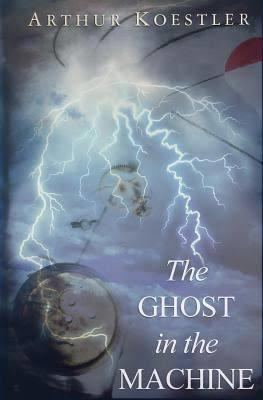8 /10 1 Votes8
Media type Print Originally published 1967 Page count 381 | 4/5 Goodreads Publication date 1967 Pages 381 (UK), 384 (US) Genres Philosophy, Fiction | |||||||||||||||||||||||||||||||||
 | ||||||||||||||||||||||||||||||||||
Publishers Hutchinson (UK), Macmillan Publishers (US) Similar Arthur Koestler books, Psychology books, Fiction books | ||||||||||||||||||||||||||||||||||
Consciousness the ghost in the machine
The Ghost in the Machine is a 1967 book about philosophical psychology by Arthur Koestler. The title is a phrase (see ghost in the machine) coined by the Oxford philosopher Gilbert Ryle to describe the Cartesian dualist account of the mind–body relationship. Koestler shares with Ryle the view that the mind of a person is not an independent non-material entity, temporarily inhabiting and governing the body. One of the book's central concepts is that as the human brain evolved, it retained and built upon earlier, more primitive brain structures. The work attempts to explain humanity's tendency towards self-destruction in terms of brain structure, philosophies, and its overarching, cyclical political–historical dynamics, reaching the height of its potential in the nuclear arms arena.
Contents
Overview
The book contributes to the longstanding debate surrounding the mind–body problem and focusing in particular on René Descartes's dualism, in the form elucidated by Ryle. Koestler's materialistic account argues that the personal experience of duality arises from what Koestler calls a holon. The notion of a holon is that the mind is at once a whole and a part. A superposition of forces manifests, at each bodily holon, as the outcome of an entire hierarchy of forces—ontogenetic, habitual, linguistic prescriptive, and social science—operating in a continuum of independent feedback and feedforward streams of a body extended to its larger environment. The streams are fed by the life signals of each and every group member, and this fully participative medley is the spirit of life one senses as a ghost; but this spirit is just a simplified output of a complex knowledge set; it is emergent from the complexity of the group's rules and strategies. He contrasts his basic approach to the mind–body problem with behaviorism's basic approach to the problem.
Following the holon of humanity down to its roots, the work explains humanity's tendency toward self-destruction in terms of brain structure, philosophies, and its overarching, cyclical political–historical dynamics, reaching the height of its potential in the nuclear arms arena.
One of the book's central concepts is that as the human triune brain has evolved, it has retained and built upon earlier, more primitive brain structures. The head portion of the "ghost in the machine" has, as a consequence of poor, inadequate connections, a rich potential for conflict. The primitive layers can, and may, together, overpower rational logic's hold. This explains a person's hate, anger and other such emotional distress.
In Janus: A Summing Up (1978) Koestler continues the theories developed in The Ghost in the Machine and further elaborates on the concept of holarchy.
